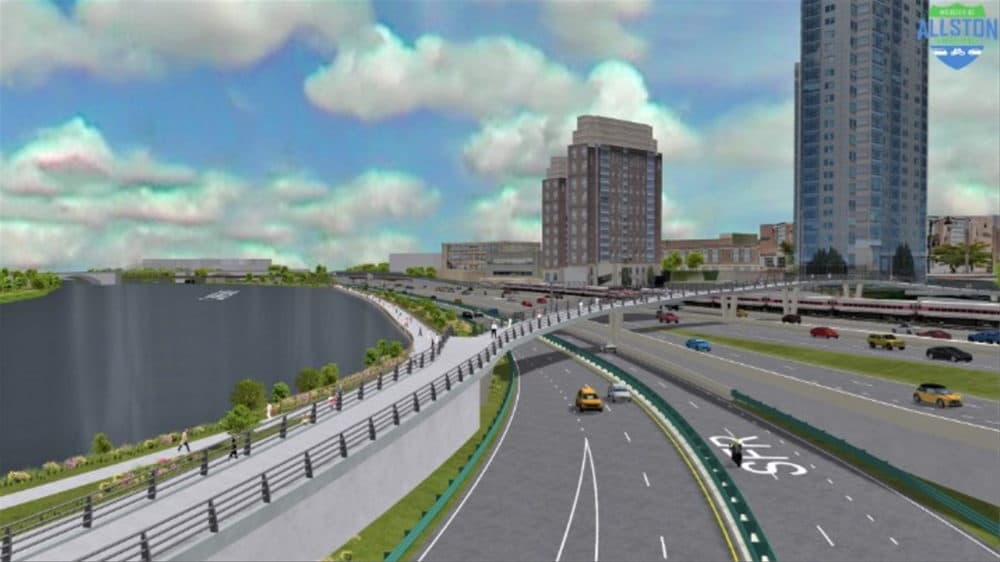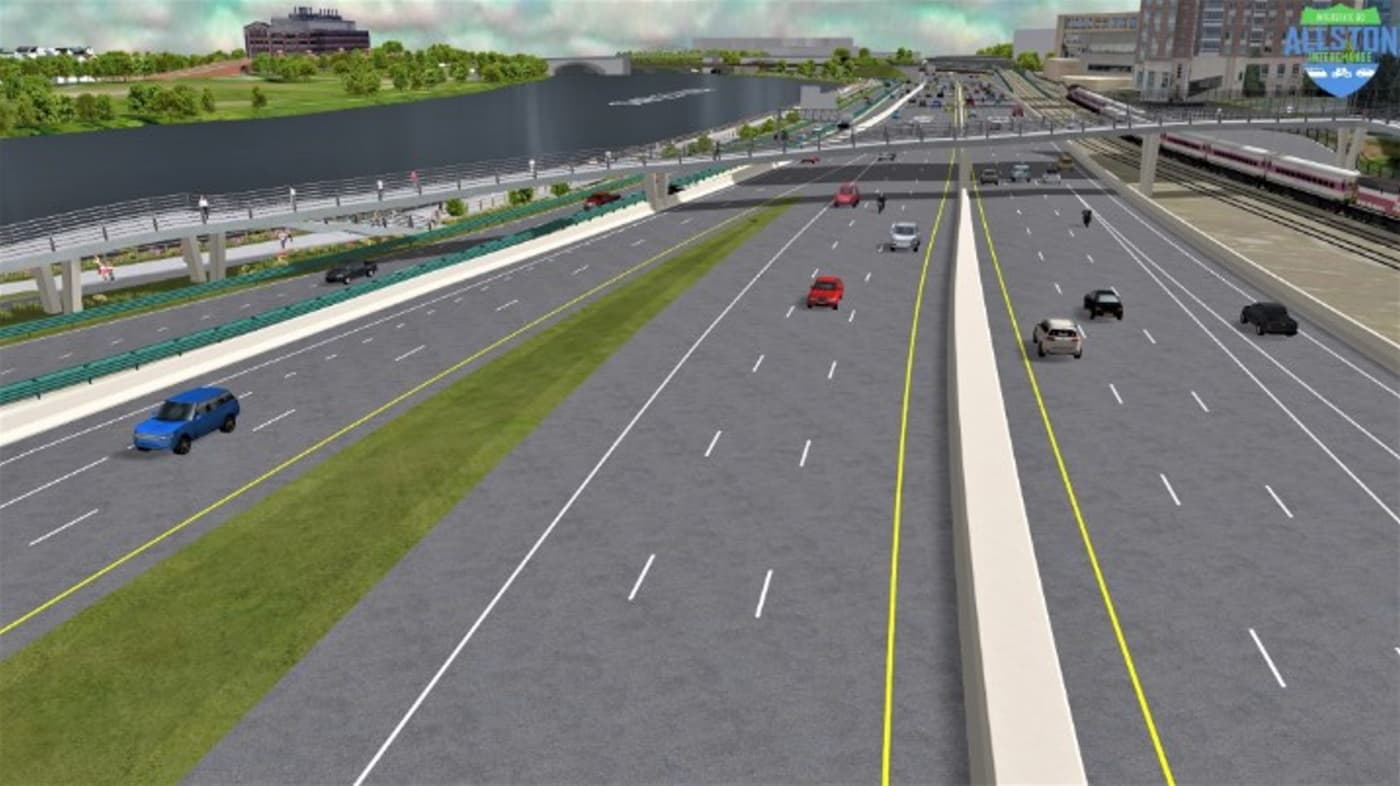Advertisement
At-Grade Option Recommended For Allston Megaproject

Potentially coming soon to a sliver of Allston land near you: four rail tracks, eight lanes of the Massachusetts Turnpike, four lanes of Soldiers Field Road, and a pedestrian boardwalk over the Charles River, all laid out side-by-side.
Ten years after discussions on the project started, the Baker administration on Wednesday embraced a design for a once-in-a-generation, $1.7 billion infrastructure overhaul in Allston that would replace an aging highway viaduct by aligning train, highway and pedestrian infrastructure at roughly the same elevation without pushing roadways onto the riverbank.
Community groups and transportation advocates have long championed that option, pitching it as the best way to balance the various modes of transportation that converge on a narrow stretch of land between Boston University and the river.
The state Department of Transportation now agrees, touting additional benefits such as a straighter turnpike alignment that will make driving conditions safer, a wider Paul Dudley White Path for bicyclists and pedestrians, and an "improved gateway into the city."
"It took hard work, and hard work pays off, because what we ended up with is something that's far better for the city, the region and the state than having to replicate 1960s highway design and having to be stuck with an elevated structure in that part of the city," Rick Dimino, president of the A Better City business group involved in discussions about the project, said in an interview.
MassDOT will unveil its plans to advance the design, referred to as the modified at-grade alternative, at a Wednesday evening meeting of the Allston Multimodal Project Task Force.
Officials will still need to conduct analysis on the other two alternatives, which involved stacking highway lanes in varying layouts, but state Highway Administrator Jonathan Gulliver said the administration's support for the at-grade option means workers will not need to "simultaneously design three different options to answer one question."
"This really clears the deck for our engineering team to focus their resources on advancing this particular project," Gulliver told the News Service. "Now we can focus on advancing this design. We have high confidence it's going to make it through the permitting process, that it will be the preferred alternative when we get to the appropriate stage, and that we can now focus our resources on where they're needed."
Advertisement
Earlier versions of the at-grade alternative called for placing Soldiers Field Road four feet into the riverbank because of the space limitations in the area, drawing significant pushback from environmental advocates and community leaders.

The updated design slices a bit of land off several other infrastructure pieces to make up that four feet, Gulliver said, meaning it would no longer require any roadway in the river's territory either permanently or temporarily during construction.
Dimino, whose group sits on a task force advising MassDOT on the project, said advocates worked over the past year to prove that the highway did not need to bleed into the river.
"The only thing that will be in relation to the river relative to this project will be what we hope to be the frosting on the cake, which is re-establishing a beautiful, livable river's edge, versus the riffraff, stones and blighting condition that that edge is currently at," he said. "Now, we're all in agreement that we can pursue these types of opportunities."
Current estimates peg the total project price at $1.7 billion and the project timeline at eight to 10 years. Gulliver said both figures could change because MassDOT remains at a "very preliminary stage of design."
It's also not yet clear how Massachusetts will finance the full project. Gulliver said he expects the city of Boston, land owner Harvard University and other stakeholders to contribute. The state will also use toll revenue from the turnpike, though it will not increase tolls beyond existing levels, Gulliver said.
Federal funding will play a major role, and Gulliver said administration officials are "closely watching what's happening in Washington" as the U.S. House prepares to vote on a $1 trillion infrastructure bill.
Once construction begins, it will almost certainly create major headaches for commuters.
"You can't build a project of this size without there being some impacts," Gulliver said. "For sure, people are going to feel it when it starts. To what degree? Again, our goal is always to reduce the pain as much as you can, but you can't build a project like this without causing some impacts."
Consensus on the single-elevation layout comes after a decade of deliberations — Dimino said his group and MassDOT officials had been "in the trenches" together — about repairing or replacing the aging viaduct that today carries the turnpike through the "throat" stretch of Allston.
In May, MassDOT announced it would accelerate $75 million in viaduct repairs. Gulliver said that work on "a piece of infrastructure that's really big and heavily used and is at the end of its life" should take place next year, even as the department works to advance a design that would eliminate the raised highway section altogether.
"In every scenario that we've mapped out, all three alternatives that are currently on the books, the viaduct stays in place for a large part of construction," he said. "It needs to be in service throughout that 10 years at least."